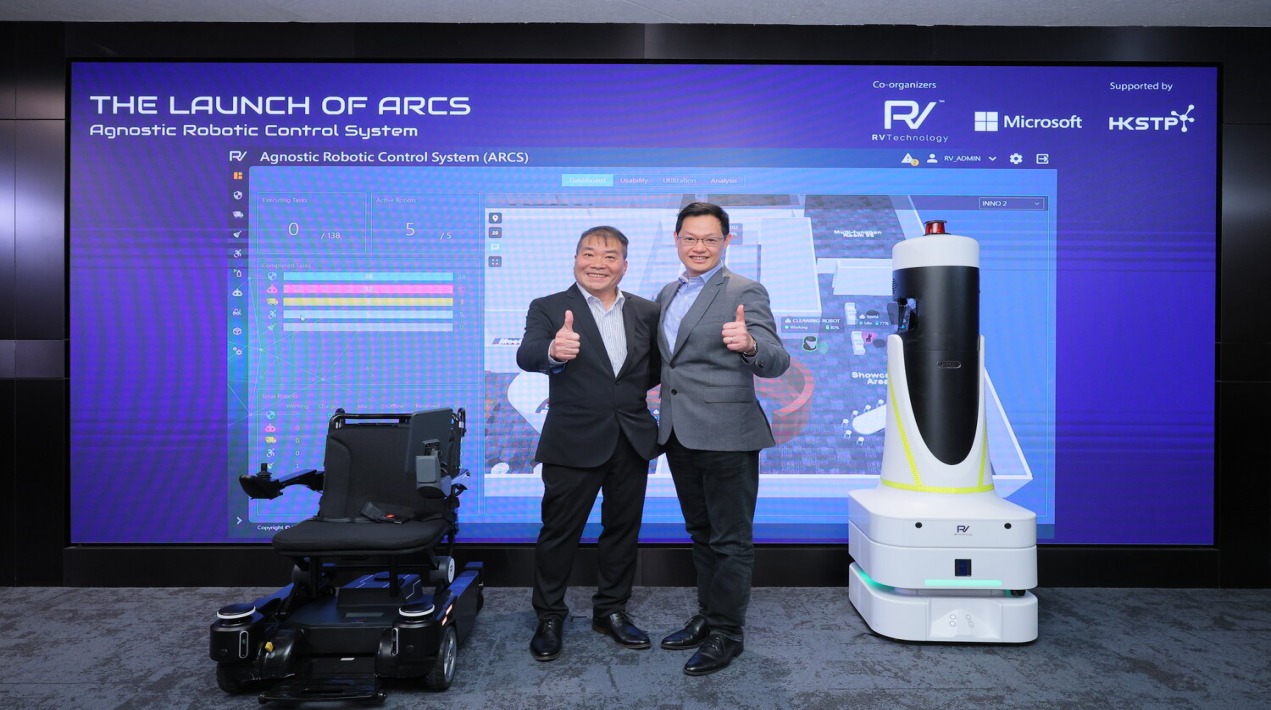
A developer of robotic applications and systems based in Hong Kong has announced the release of ARCS, a Robotic Control System developed in-house and powered by cloud technology from a multinational technology corporation based in the United States.
The company is a member of Hong Kong Science and Technology Park Corporation’s Leading Enterprises Acceleration Programme (LEAP) and has received full support from HKSTP. This has enabled them to establish their office and a state-of-the-art automated warehouse, called the RobEX Centre, within the campus.
In recent years, work automation has become increasingly popular. The widespread use of robots in our daily lives has made it possible to free up human labour through highly efficient execution abilities. However, there has been a lack of agnostic platforms to coordinate and control robots of different brands, functions, and systems, which has prevented our robots from creating synergy in the most efficient way possible.
Furthermore, there is an urgent need for society to proactively explore alternative approaches to maximising the potential of robots, especially with intensifying community issues such as an ageing population and declining birth rates, which further widen the local workforce gap. This could greatly elevate our quality of life, particularly for those with lower self-care ability, such as the elderly and the sick.
Moreover, with environmental, social, and governance (ESG) subjects becoming more prominent, organisations are increasing their investments in sustainability and environmental research to find solutions that can boost energy efficiency through robotic technologies.
The HKSTP company is dedicated to developing a range of robotic solutions that address specific challenges, with the ultimate aim of integrating these technologies into daily life and supporting various sectors such as healthcare, smart city, logistics, and education.
With a vision to transform Hong Kong into a smart city, the company developed ARCS. Today, ARCS has been implemented in the fields of rehabilitation and healthcare, offering more autonomous and sophisticated care services, while also alleviating the workload of healthcare professionals through the assistance of smart technologies.
ARCS offers more than just improved efficiency and cost savings for enterprises and organisations. Its distinctive feature of centralised management streamlines the process of data management and analysis, resolving the isolation deadlock of different types of robots.
In the near future, ARCS will integrate artificial intelligence to cater to different scenarios, create the most suitable application plans, and provide tailor-made suggestions derived from the analysis of environmental data collected by robots. This will take the sustainability performance of corporations and organisations to the next level.
During the press conference, the company demonstrated a series of collaborative tasks performed by robots managed by ARCS in three simulated scenes. The first scenario applies to the retail and catering industry: when a store receives an online order, ARCS immediately obtains data from elevators and turnstiles through the Internet of Things (IoT) and delivers the product to the customer using a managed robot.
The second scene is suitable for public places with heavier traffic, such as malls and hospitals. When a patrol robot detects a mass gathering, ARCS can coordinate and send the concierge robot with its camera open for a live stream. This helps users to have a better understanding of the incident with minimised reaction time, while simultaneously instructing the patrol robot to resume its original task.
The third scene is designed for people with disabilities in various public venues. ARCS remotely controls the wheelchair robot, allowing one or a group of robots to safely carry those in need to their destinations.
Additionally, the company showcased the use of ARCS to analyse centralised data, illustrating the system’s capability to streamline the data collection and analysis process, as well as its great potential to incorporate the use of business intelligence.
















